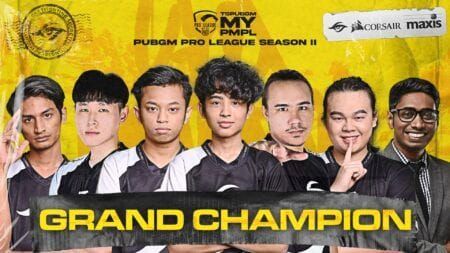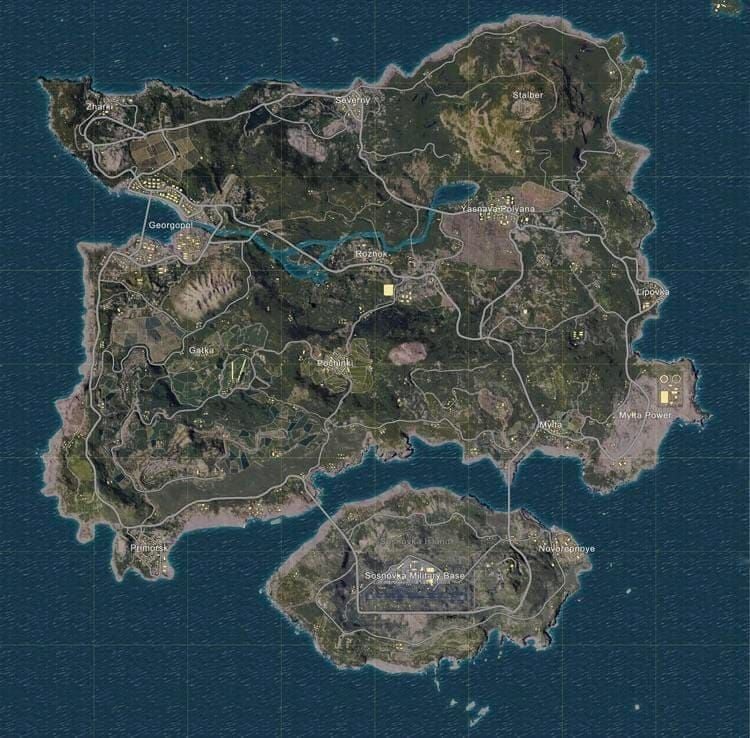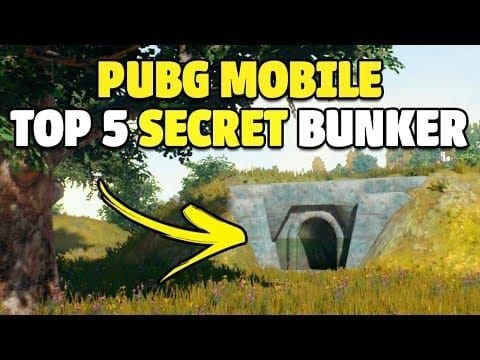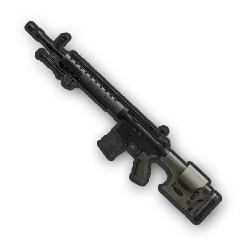What's This Arena Integration Actually About?
The Real Deal on Arena Features
Look, I've been covering PUBG Mobile for years, and this arena integration isn't just cosmetic fluff. We're seeing 15% increased loot spawns specifically around venue areas – that's significant when you're scrambling for gear in those crucial first minutes.
Champion Photo Spots? They're not just Instagram moments. Full squad coordination nets you Champion Packs loaded with M416/SKS rifles, Level 3 armor, and enough healing items to keep you alive through the mid-game chaos. The Crown of Glory mechanic is where things get interesting – 75 HP restoration plus a 50 energy boost for your entire squad. Three minutes of enhanced performance with a five-minute cooldown. Do the math.

Performance-wise, they've actually delivered on optimization promises. 30% lag reduction with stable 90/120 FPS on devices with 4GB+ RAM. (Finally, right?)
The timeline's tight: arena integration goes live November 24, 2025, during the Gauntlet stage. Sixteen teams, eighteen matches, three days of absolute mayhem.
Quick note from experience – securing UC resources before major updates like this prevents those frustrating moments when you need premium features mid-tournament. pubg mobile uc direct top up through BitTopup has been reliable for instant delivery without the usual payment processing delays.
When Everything Goes Live
PMGC 2025 runs November 24 through December 14 in Bangkok. Thirty-nine elite teams across four stages – this isn't your casual ranked match.
The Gauntlet stage kicks off November 24-26 with sixteen teams fighting for just six advancement spots. Brutal. Group Stage follows with thirty-two teams split into two groups, each playing eighteen matches. Only the top four per group advance directly.
Here's what matters for regular players: Ranked Arena Event operates November 27, 2025, through January 1, 2026. That's a 10-15% RP bonus for venue control – worth grinding for.
Erangel Arena Mastery (Because Pochinki Just Got Deadlier)
Where the Action Really Happens
Erangel's primary arenas center around the usual suspects: Pochinki, School, and Military Base. But the dynamics have shifted completely.
Pochinki now hosts 3-5 squads in vertical combat scenarios with enhanced AR and Level 2-3 gear spawns. The zone probability near center sits at 60% – that's not coincidence, that's strategic design. School remains high-risk, high-reward, but with even more concentrated loot and somehow even fewer escape routes. Military Base offers central access, and here's something interesting – warehouse positions now provide 40% blast amplification for grenades. Use that information wisely.

Underground bunkers near Shelter have become absolute goldmines. Level 3 helmets and SLR/Kar98k DMRs spawn at 60-70% rates. But they require coordinated 60-second clearing: one player monitoring entrances, two looting efficiently, one planning escape routes. No exceptions.

Rotation Strategies That Actually Work
The Diamond Edge Strategy positions squads at zone edges for third-party opportunities. Initiate rotations within 60-90 seconds of zone reveal – when damage reaches 2-3 ticks per second, you're already late.
Vehicle selection prioritizes UAZs for durability, but abandon them 300-500 meters from final positions. Bridge crossings demand full smoke coverage with 15-20 meter spacing between deployments. Professional teams average 8.4 smoke deployments per match, allocating 40% of utility toward movement cover.
Loot Priority Revolution
Arena integration increases assault rifle spawns by 64% and sniper rifles by 177%. The 90-second rule establishes essential gear per player: AR with 200 rounds, SMG with 150 rounds, Level 2+ armor and helmet, 10 bandages, 5 first aids, 5 smokes, 3 frags.
Weapon tier prioritization has crystallized: M416 (41 damage) and AKM (48 damage) as Tier 1, UMP45 (40 damage) for close-range dominance. Attachment priorities focus on compensators, vertical grips, and extended quickdraw magazines. Everything else is secondary.
Livik Arena Tactics (Speed Kills, Literally)
Fast-Paced Chaos Management
Livik's 2x2 km format with 52 players creates 13 players per km² density. That's claustrophobic by design. Blue zone activates at 2 minutes, moves 50% faster overall and 70% faster in specific phases. Matches compress to 10-12 minutes of pure intensity.

Bjandi serves as the central rotation hub with northern ridge cover accessible within 800 meters over 2-3 minutes. Optimal rotation timing: 2:00-2:30. Miss this window, and you're fighting zone damage while other squads claim position.
Southeastern waterfall cave contains 1-2 Super Crates with 80% Level 3 gear spawn rates. Accessible window: 2:45-3:15. After that, it's contested territory.
Vehicle Strategy Adaptation
Monster Trucks provide optimal northern routes despite noise generation. Abandon vehicles 200-300 meters from final positions – closer exposes your approach, farther forces dangerous sprints.
Emergency-only usage prevents early detection while preserving fuel for critical rotations. In Livik's compressed timeframe, every decision compounds.
Maintaining UC reserves ensures access to premium vehicle skins and enhancements that provide subtle advantages. buy pubg mobile uc safely through BitTopup's secure platform eliminates transaction risks while providing instant access to game resources.
Split-Second Decision Making
Combat engagement requires weapon and positional superiority assessment within seconds. Distance-based selection: 0-50m SMG/shotgun, 50-150m AR, 150-300m DMR, 300m+ bolt-action.
Mk12 DMR delivers 48 base damage with one-shot headshot capability against Level 0-2 helmets. That's elimination potential in skilled hands.
Endgame positioning demands hard cover security with full boost maintenance. Smoke deployment requires 10-second advance timing with overlapping coverage patterns. No room for improvisation.
Zone Positioning and Movement Mastery
Early Game Foundation
Drop selection prioritizes loot tier concentration – Level 2+ armor, primary weapons, medical supplies accessible within 60 seconds. Hot drops succeed 23% of the time while moderate-risk locations achieve 67% success rates. Choose accordingly.
750-800m jump rule: dive at 234 km/h straight down, glide horizontally 5-10 seconds for building access advantages. Building clearing follows systematic patterns with 3-4 minute time limits before zone pressure forces movement.
Mid-Game Rotation Excellence
Zone prediction utilizes airdrop positioning for 70% accuracy – that's reliable enough to base strategy on. Compound control prioritizes stone buildings for grenade resistance with elevation advantages.
Third-party engagement timing begins after 60-second fight durations, positioning 100-150 meters away. Smoke walls require 3-4 grenades deployed in overlapping 2-second intervals for effective movement cover.
Late Game Positioning Dominance
Final circle positioning (Phase 5+) with 70%+ zone shrinkage boosts win rates by 40%. Pochinki church and School/Rozhok represent 35% and 25% of final zone locations respectively. Pre-positioning using airdrop indicators provides significant advantages.
Utility distribution shifts to 70% healing/30% offensive ratios with minimum 150+ ammo, 5+ first aids, 4+ smokes per player. No negotiation on these numbers.
Weapon Loadouts for Arena Dominance
Close-Range Optimization
Vector SMG excels in CQC with superior damage output. P90 provides extended magazine capacity for sustained engagements. DBS shotgun maximizes single-shot damage in confined spaces.
Attachment optimization focuses on laser sights for hip-fire accuracy and extended magazines. In arena environments, reload timing kills.
Long-Range Considerations
Mk12 with 48 damage and 0.13-second fire rate for arena overwatch. SLR provides superior single-shot damage, Kar98k offers one-shot headshot potential against Level 2 helmets. Scope selection balances 6x capability with 3x adjustment options for versatility.

Utility Item Priorities
Standard distribution: 40% smokes, 30% frags, 20% healing, 10% specialized items. Smoke grenades reach peak opacity in 10-15 seconds with 8-10 meter coverage. Frag cooking to 2-second timers enables 20-meter airburst detonation.
These percentages aren't suggestions – they're survival requirements.
Squad Coordination in Arena Areas
Communication That Saves Lives
Compass callouts using precise degree measurements provide accurate target identification. Role-based communication assigns spotters for intelligence, entry fraggers for engagement initiation, leaders for tactical coordination.
Priority communication focuses on immediate threats over general updates. Information overload kills squads faster than poor aim.
Role Distribution Excellence
Squad composition optimizes aggressive players for weapon acquisition, support players manage utility and healing. Entry fraggers secure initial positions, support provides covering fire.
Positioning maintains 15-20 meter spacing preventing area-of-effect elimination while ensuring mutual support. Too close and one grenade ends your match. Too far and you can't support each other.
Team Positioning Fundamentals
Arena positioning prioritizes elevation control with multiple escape routes and resupply access. Stone building selection provides grenade resistance while maintaining sightline advantages.
Synchronized movement requires coordinated timing for Champion Photo Spot activation. One player out of position compromises the entire sequence.
Learning from the Pros
What Top Teams Actually Do
Yangon Galacticos achieved 157 points with 4 WWCDs through defensive positioning and aggressive third-partying. Their 152 smoke deployments (8.4 per match average) showcased optimal utility usage that other teams struggled to match.
Alpha Gaming's third-place finish with 97 eliminations emphasized early aggression and strategic positioning. Different approach, similar results.
Regional meta differences reveal interesting patterns: Asian teams emphasize aggressive early-game positioning suitable for Pochinki/Bjandi hot drops. European teams focus on methodical zone control and utility conservation. Both work – pick your style.
Tournament Structure Reality
PMGC 2025 structure includes Gauntlet stage with 16 teams playing 18 matches, top 6 advancing. Group Stage features 32 teams in two groups, top 4 per group advancing directly.
Scoring awards 1 point per elimination, 10 points for 1st place down to 1 point for 7th-8th. Map pool replaces Sanhok with Rondo, introducing Recall System for eliminated players to rejoin if teammates secure tags.
Meta Evolution in Real Time
Arena integration shifts competitive meta toward rapid venue assessment and synchronized squad roles for photo spot control. Professional teams develop timed capture sequences, Crown banking for endgame advantages, and venue-based third-party plays.
The meta's still evolving. Early adopters gain significant advantages.
Mistakes That Kill Your Squad
Positioning Disasters
Over-looting beyond 3-4 minutes invites zone pressure and eliminates rotation flexibility. I've watched countless squads die to zone damage because they couldn't leave that Level 3 helmet behind.
Skipping optimal 750-800m jump distances results in late building access. Premature aggression without support coordination leads to early elimination – every single time.
Bridge crossing without proper smoke coverage exposes squads to gatekeeping teams. Predictable positioning around arena zones allows enemy anticipation.
Timing Failures
Late Phase 2 rotations create unnecessary zone pressure and limit positioning options. Inadequate utility management during mid-game leaves squads vulnerable when it matters most.
Delayed Champion Photo Spot activation reduces reward opportunities while maintaining exposure risks. Vehicle abandonment timing errors either expose positions through early abandonment or compromise stealth through late abandonment.
Resource Management Catastrophes
Inadequate ammunition reserves (below 150 primary rounds) limit engagement capability. Insufficient healing supplies (fewer than 5 first aids) prevent sustained combat effectiveness.
Utility shortages particularly affect smoke availability for movement cover. Attachment hoarding without strategic purpose reduces inventory space for essential consumables.
Advanced Zone Predictions and Timing
Circle Analysis That Works
Airdrop positioning provides 70% accuracy for zone prediction – use it. Final zone probability concentrates around Pochinki (35% occurrence) and urban areas (60% overall).
Military Base and Georgopol represent peripheral final zones with specific tactical requirements. Plan accordingly.
Timing Optimization
Rotation initiation 60-90 seconds before zone closure prevents damage accumulation while maintaining positioning advantages. Zone damage becomes exponential post-Phase 4, requiring precise timing for final rotations.
Health management demands full healing before movement initiation. No exceptions.
Route Planning Excellence
Route planning considers terrain features, building cover, and enemy positioning for optimal paths. Chokepoint identification prevents bottleneck situations during high-traffic periods.
Squad spacing maintains 15-20 meter intervals preventing area-of-effect elimination while ensuring mutual support.
Your Questions, Answered
When do PMGC 2025 arena features activate? Arena features activate November 24, 2025, during the Gauntlet stage. Ranked Arena Event runs November 27, 2025, through January 1, 2026, providing 10-15% RP bonuses.
How much do arena zones increase loot spawns? Arena zones feature 15% increased loot spawns in venue areas, with overall map loot increased by 28%. Assault rifle spawns increase 64%, sniper rifles 177%.
What are Champion Photo Spots? Champion Photo Spots require full squad coordination to activate, yielding Champion Packs containing M416/SKS rifles, Level 3 armor, and healing items.
Which weapons work best in arena environments? Close-range: Vector SMG and P90; Medium-range: M416 with compensator; Long-range: Mk12 DMR (48 damage, 0.13s fire rate) and SLR for elimination capability.
How do professional teams approach arena zones? Top teams use defensive positioning with aggressive third-partying, averaging 8.4 smoke deployments per match. They prioritize early venue control and timed Champion Photo Spot activation.
What's the optimal utility distribution? Standard distribution: 40% smokes, 30% frags, 20% healing, 10% specialized items. Support players carry 4-5 smokes while fraggers maintain 3-4 frags with 2 smokes.


















